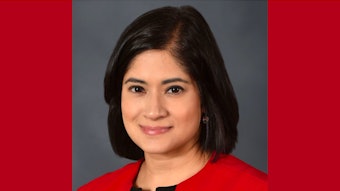Challenged by rare cardiomyopathies
Session offers new insights and management strategies.

Cardiologists are well versed in treating cardiomyopathies. But understandingthe mechanisms underlying the conditions and alterations in cardiac structure and function — as well as diagnostic tools — remains a challenge.
Kevin Alexander, MD, is among the speakers taking a deeper look at those challenges Saturday afternoon in “New Insights Into Cardiomyopathies That Plague the Cardiologist.” Alexander is an advanced heart failure and transplant cardiologist and member of the Stanford Amyloid Center at Stanford University in California.
“Treating cardiomyopathies is an area where precision medicine is becoming a reality. Historically, our approach to heart failure in general is using a standard set of medications, such as beta blockers and aldosterone antagonists, which may not directly treat the various underlying cause of cardiomyopathies,” said Alexander, assistant professor of cardiovascular medicine at Stanford University.
“As we’ve gotten more understanding of genetic and infiltrative cardiomyopathies, like amyloid and hypertrophic cardiomyopathy, treatments specifically for these underlying subtypes have been developed. So, I think that that has the potential for improved clinical outcomes for many heart failure patients.”
One challenge is to continue to tailor therapies to treat the underlying cause of cardiomyopathy, he said. Another is how to accurately measure treatment response. Advances have been made in multimodality imaging using MRI, nuclear scans and CT. Both imaging and blood-based biomarkers need further development to assess patient outcomes, he said.
Alexander uses cardiac amyloidosis as an example when describing the challenges.
“This is a condition where protein buildup in the heart makes it thicker and stiffer over time, and the heart eventually fails,” he said. Historically, physicians would diagnose the condition with heart biopsy, an invasive procedure that not every center has the expertise to perform.
“Fortunately, in recent years, there has been rapid and widespread adoption of a nuclear scan as a noninvasive diagnostic alternative to avoid the biopsy in many cases,” he said. “This allows us to screen more patients because it’s safe and more centers have access to this test.”
However, more work needs to be done to raise awareness of amyloidosis and ensure diagnostic and treatment access in underserved areas, he added.
Rosalyn O. Adigun, MD, PharmD, advanced heart failure and imaging cardiologist at the Mayo Clinic in Rochester, Minnesota, will also present at the session. Adigun said she believes gaps in knowledge and level of awareness have hindered the ability of providers to identify some of the uncommon cardiomyopathies they may encounter.
“Most clinicians learn about these ‘rare’ disorders in medical school and then are far removed from them based on where they may practice,” said Adigun, who is also an assistant professor of medicine at Mayo Clinic College of Medicine and Science.
“Because of this, there is often a distance between learning about these cardiomyopathies and seeing them in practice. The heterogenous presentation of some of these disorders can unfortunately also limit the ability of some providers to recognize them earlier in the disease course before patients develop systemic involvement and end-organ dysfunction.”
Over the last few years, professional medical organizations have provided expert consensus statements, developed centers of excellence and increased patient outreach to increase public awareness, she said, highlighting red-flag symptoms, patterns or associations of disease and heterogenous presentations. Additionally, patient advocacy groups have provided educational resources to patients, family members and caregivers to help them identify and improve access to local resources and ongoing research trials. Cardiologists continue to raise awareness within their specialty, including clinicians, physician assistants and nurse practitioners who are often the first to see these patients.
There has also been a strong emphasis, through clinical practice guidelines, for example to reflect evolving knowledge on these rare cardiomyopathies and the role of family histories and genetic testing to identify some cardiomyopathies earlier. These efforts continue to improve the work of identifying these cardiomyopathies earlier. Influential guidelines include the 2022 AHA/ACC/HFSA Guideline for the Management of Heart Failure: A Report of the American College of Cardiology/American Heart Association Joint Committee on Clinical Practice Guidelines; the 2024 AHA/ACC/AMSSM/HRS/PACES/SCMR Guideline for the Management of Hypertrophic Cardiomyopathy: A Report of the American Heart Association/American College of Cardiology Joint Committee on Clinical Practice Guidelines; Advancing Transthyretin Amyloidosis Drug Development in an Evolving Treatment Landscape: Amyloidosis Forum Meeting Proceedings and expert consensus recommendations to improve diagnosis of ATTR amyloidosis with polyneuropathy.
Early identification and intervention have been shown to influence outcomes, she said. In addition, although scientists have made progress in understanding the molecular basis of most cardiomyopathies, there’s much still to learn about how and why specific cardiomyopathies can often present differently in different patients, Adigun said.
Limited therapeutic options add to the challenge as well, she said, calling the problem “complex and layered,” Adigun said. There is a tendency for the medical community — from physicians and physician-scientists to pharmaceutical companies — to look toward diseases with effective therapies or interventions for patients and have a subconscious desire to focus efforts in those areas. In rare cardiomyopathies, the picture is further complicated because fewer patients have been identified, resulting in less data to rely on.
Creating well-designed interventional trials is another challenge, she said. Hurdles include an evolving knowledge of the natural history of these cardiomyopathies; pace of developing validated fit-for-purpose diagnostic tools specific for these conditions; evolving diagnostic algorithms; lack of disease-centric endpoints for clinical trials; and limited interest in investing to advance the science in rare diseases.
Nevertheless, Adigun noted several management strategies to improve outcomes for cardiomyopathies. They include:
- Enhanced screening and surveillance in at-risk populations, providing the opportunity to continue educating patients and health care professionals
- Disease-modifying therapies or other interventions, when available
- Symptom management and prevention of disease-related complications
Like Alexander, Adigun said she believes cardiology is seeing great strides in precision medicine and, although this will affect management of diseases generally, the impact will be more evident in rare cardiomyopathies. Advances in genome sequencing, evolution of cardiac imaging modalities and novel work in creating in-vitro and ex-vivo models of disease can improve understanding of the molecular underpinnings of disease and identify better targets for interventions, she said.
“With genomic sequencing, we can now identify more cardiovascular diseases that have a defined inheritance pattern caused by single genetic variant compared to other common cardiovascular diseases characterized by accumulation of small genetic variants with different implications,” Adigun said. “Identifying these variants and their weighted implications for disease manifestations are informing research in genome editing modalities in inherited cardiomyopathies, with encouraging data in early phase studies.”











